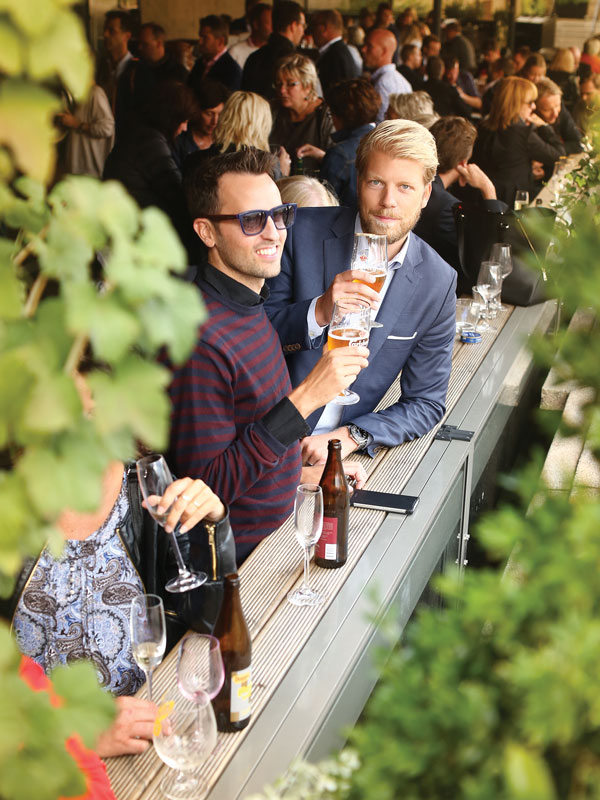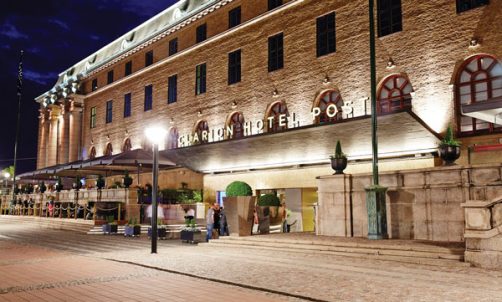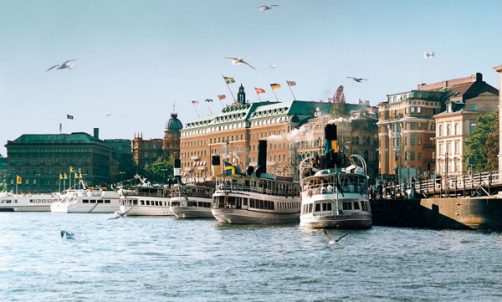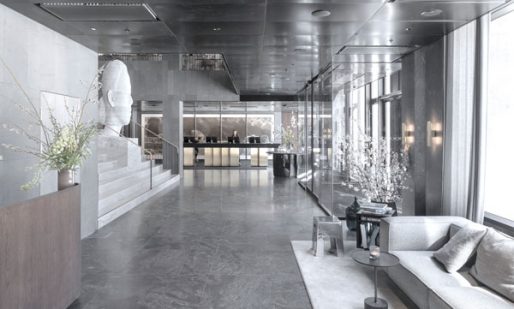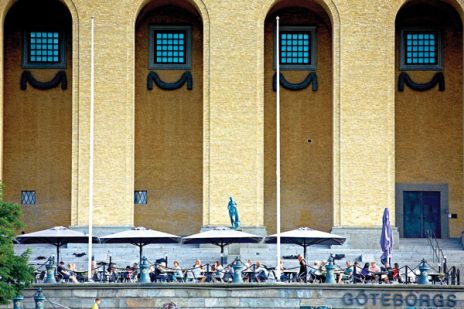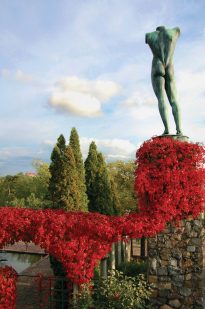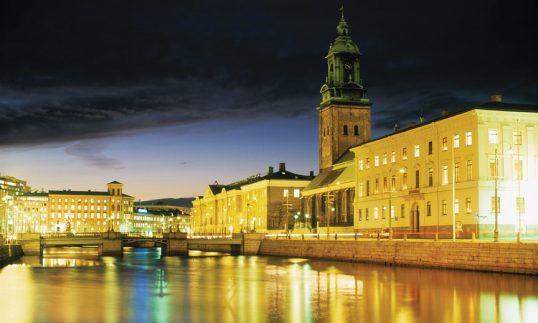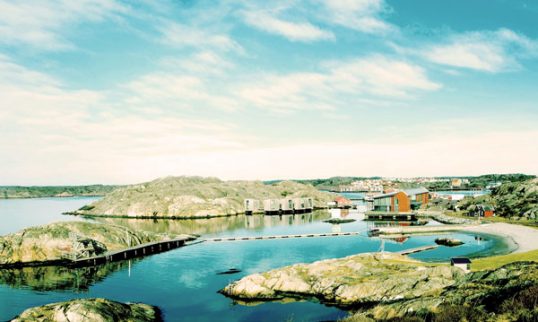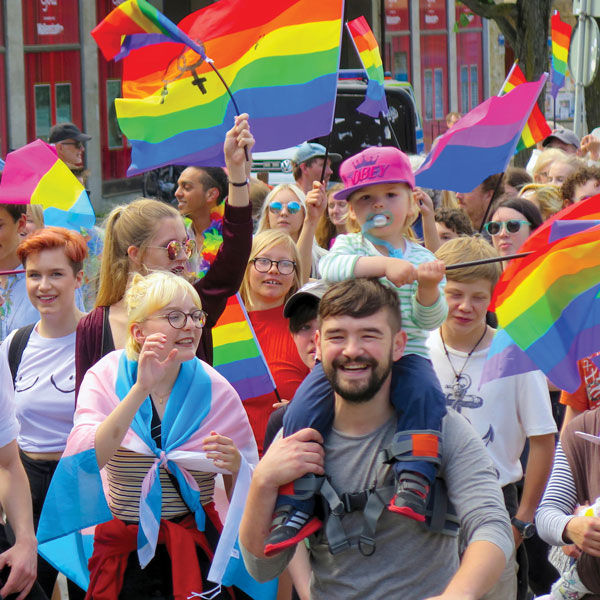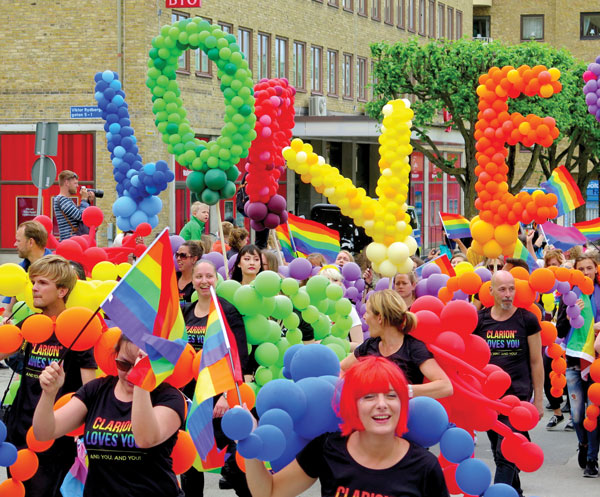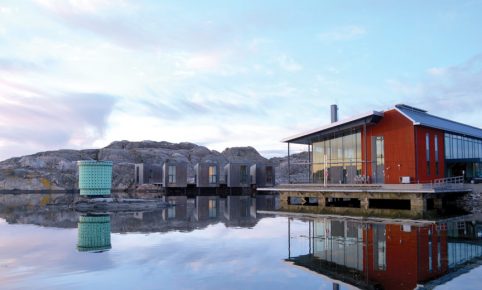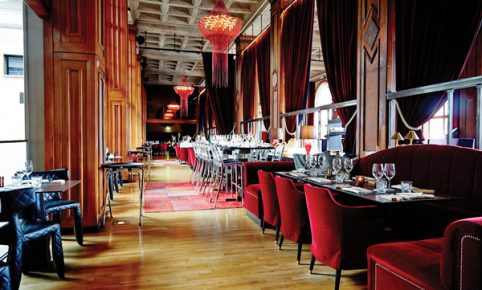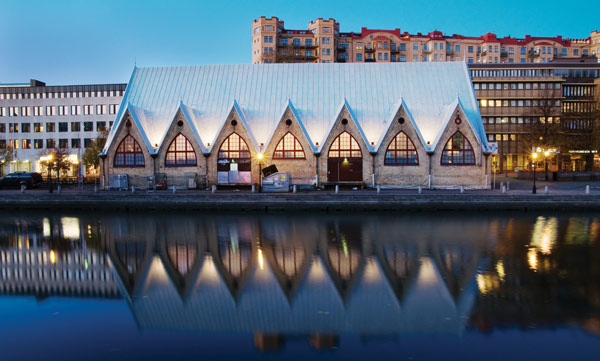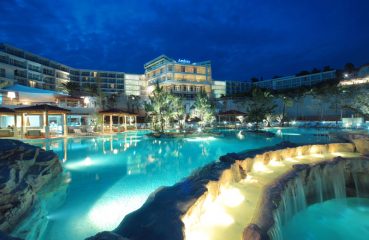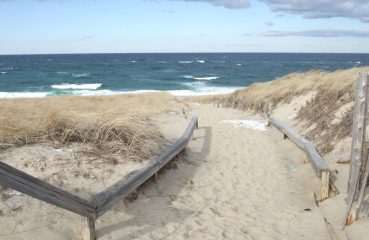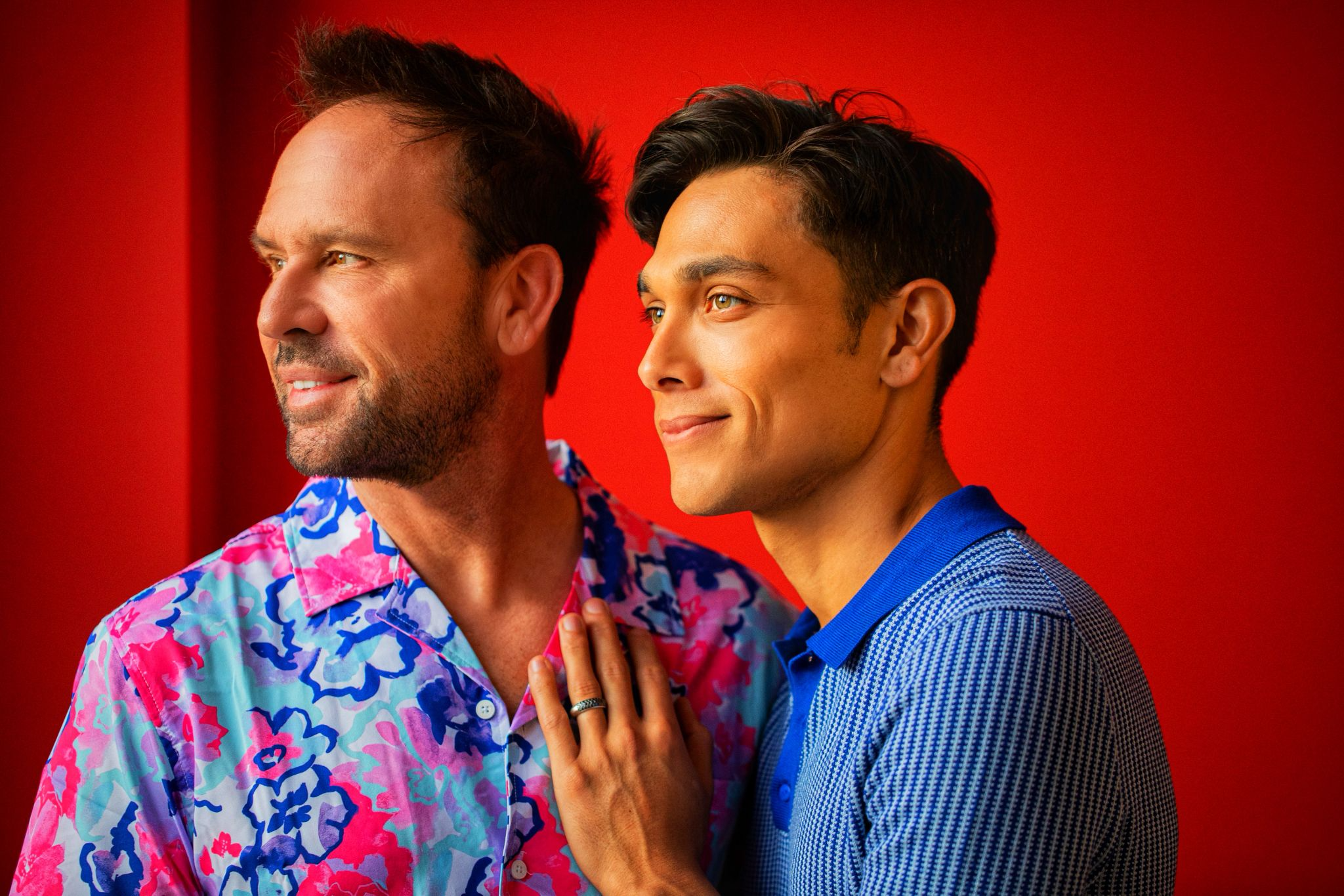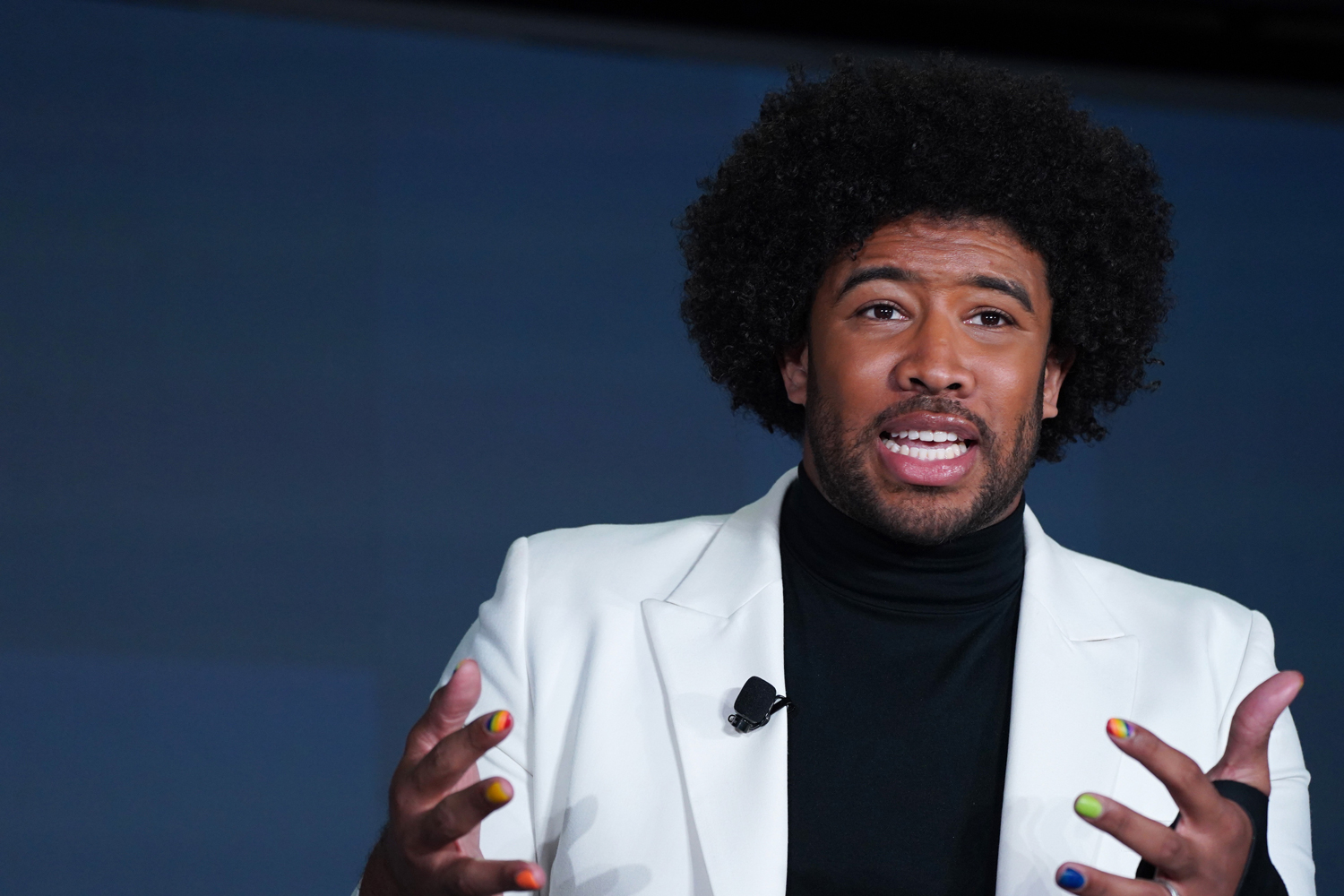Here’s what not-to-miss as two beautiful, water-framed Swedish cities share the honor of hosting Europride this summer.
In the face of mounting global challenges for the LGBT community, Sweden has declared its determination to lead the fight for LGBT equality. And if you doubt the resolve of this Scandinavian country of ten million, think again. Think of the dominance of Swedish brands — Ikea, Absolut, H&M, Volvo. Consider their pop hits, packed with hooks you can’t get out of your head. That’s Sweden when they put their mind to something.
Throughout its modern history, Sweden has been a champion of the LGBT community. Same-sex relations were legalized in 1944, which was followed in 1976 by the integration of the Swedish military. In 1979, Sweden became the first country in the world to declassify homosexuality as a medical disorder—and same-sex marriage has been legal since 2009.
In honoring Sweden’s LGBT advocacy, EuroPride has chosen two Swedish cities as hosts for its 2018 festival. Under the banner “Two Cities, One Summer,” EuroPride 2018 will join with the organizers of Stockholm Pride and Gothenburg’s West Pride for a three-week celebration that commences in Stockholm and concludes on Sweden’s west coast in Gothenburg.
As the Swedish government recently asserted, “Every effort we have made to strengthen LGBT rights has been preceded by lively discussions. Sometimes it sounded like the world was going to fall apart. But that has not happened; the world has not broken up because we said yes to love and equality of all people.”
Now that’s a government you want in your court.
Stockholm: LGBT Scandinavia’s Sexy Capital
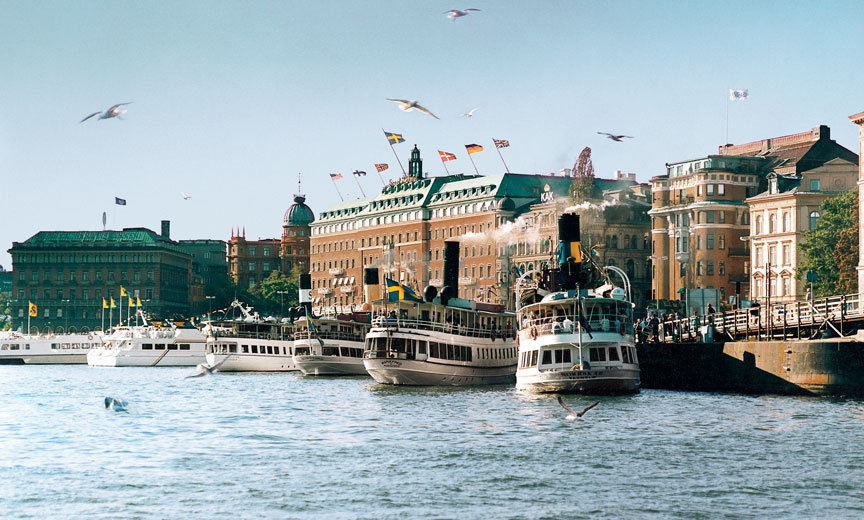
Stockholm Waterfront—photo courtesy VisitStockholm3
As the host of EuroPride in 1998 and 2008, Stockholm showed the world how Sweden celebrates their LGBT community. During the city’s annual Stockholm Pride celebrations, rainbow flags wave from the city’s most prominent buildings and bridges. Its Pride Parade attracts more than 500,000 spectators as it winds through the city for nearly three miles — from Stockholm City Hall and on through the central district of Ostermalm with more than 45,000 participants and 200 floats marching in solidarity to Pride Park, the historic sports ground that played host to the 1912 Summer Olympics.
This year’s EuroPride 2018 celebrations will include EuroPride Park, as well as EuroPride House which will host over 400 seminars and workshops — and a record-breaking EuroPride Parade featuring international music artists. For a bird’s-eye panorama of the parade, a table at Orangeriet (restaurant-orangeriet.dk) offers a Swedish take on la dolce vita along Stockholm’s waterfront. Packed with rainbow-clad revelers, the party at this popular trattoria on Mälarstrand continues long after the parade passes by.
Afterwards take your travel companion (or the sexiest Swede who’ll accept your invitation) back to At Six (hotelatsix.com) Stockholm’s latest luxury hotel. What was once a 1970s Brutalist-era bank is now a hot new hub for Stockholm’s belle monde. More than a hotel, At Six features numerous social spaces, including a listening lounge and a cocktail bar known for its gin-infused Tipsy Tea. At Six’s extensive art collection showcases commissioned works — as well as the hotel’s signature sculpture, an eight-foot high marble head perched on the lobby’s grand white granite staircase. The steel-and-timber interiors are softened with lush textiles, while guest rooms are clad in dark oak with tinted mirrors and marble credenzas.
Apart from spectacular views, the hotel’s rooftop offers Frida Ronge’s restaurant Tak (tak.se). Meaning “roof” in Swedish, the restaurant continues Ronge’s love affair with Japan while providing the celebrated chef with room to spread her gastronomic wings. Complemented by a raw bar and a rooftop bar, the restaurant fuses Japanese cuisine with Swedish ingredients for a uniquely flavorful take on Scandinavian staples and delicacies.
A summer visit to Stockholm would not be complete without a nightcap at Mälarpaviljongen (malarpaviljongen.se), the floating oasis on Lake Mälaren. Held afloat by three pontoons, the seaside bar and lounge remains one of Stockholm’s most beloved nightspots.
One of the best ways to appreciate the beauty of Stockholm is from the water. Comprised of 14 islands connected by various bridges, Stockholm possesses a vast network of ferries that glide along the city’s quays from island to island. Less than twenty minutes by ferry from central Stockholm, the isle of Fjäderholmarna gives a great sense of Stockholm’s 24,000-island archipelago. A former military compound, the island is dotted with artists’ studios and boutiques—and Rökeriet Fjäderholmarna (rokeriet-fjaderholmarna.se), a restaurant renowned for its slow-smoked prawns and salmon.
Equally alluring is the bucolic isle of Skeppsholmen, which is home to the Moderna Museet (modernamuseet.se) and its sculpture gardens showcasing works by Niki de Saint Phalle and Picasso. Set amidst a sylvan landscape of lawns and waterfront vistas, the design-savvy Hotel Skeppsholmen (hotelskeppsholmen.se) is an urban resort located in 17th-century buildings that once housed the Royal Marines. The hotel still maintains its original floorboards — as well as Sweden’s first tennis court, built in 1882.
For another glimpse into Sweden’s Gilded Age, consider Hallwyl House (hallwylskamuseet.se), originally built for Count and Countess von Hallwyl who desired a Mediterranean palazzo in downtown Stockholm. Completed in 1898, the private residence was noted for introducing electric lighting and central heating to Sweden. During summer, Hallwyl House converts its interior courtyard into a restaurant, thereby offering guests the pleasure of dining in a Swedish palace.
Before leaving Stockholm, take a stroll along Strandvägen, one of Sweden’s most posh waterfront promenades. When you notice a full-size rainbow flag flying proudly alongside the flags of Sweden and Britain, you’ll know that you’ve arrived at Hotel Diplomat. What was once an Art Nouveau residence for diplomats is now a luxury hotel with splendid harbor views and elegant rooms furnished in period décor—and a secluded cocktail bar perfect for postprandial trysts.
Gothenburg’s Gay Revolution
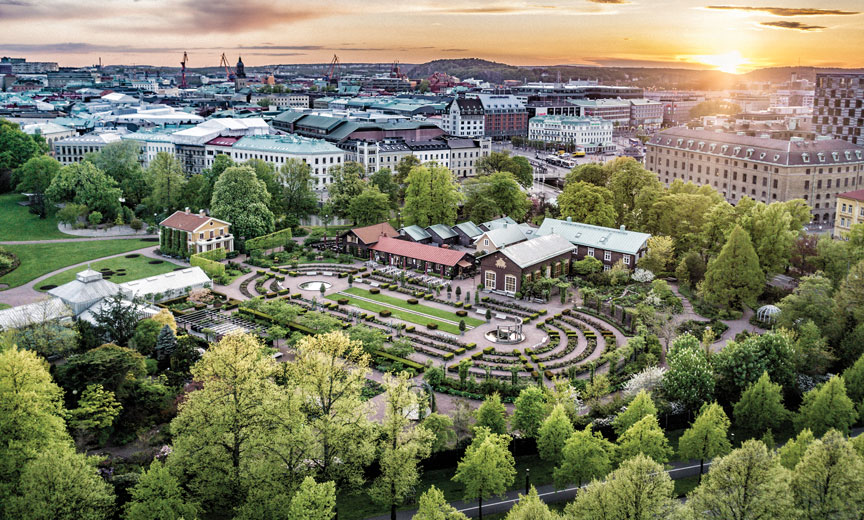
Gothenburg Garden Society Copyright Per Pixel Petersson
Little more than twenty years ago, Gothenburg was known as the most homophobic city in Sweden. Back then, it wasn’t easy to be gay in Gothenburg, according to EuroPride coordinator Alex Snäckerström. Located on the west coast of Sweden amidst a dramatic 100-mile coastline of more than 8,000 skerries and islands, life in Sweden’s second most populous city was a challenge for LGBT people.
Yet today, Gothenburg is widely recognized as one of the world’s most progressive cities. A laidback coastal city with a cosmopolitan vibe, Gothenburg was designed by Dutch city planners in the 17th century, hence its canals and broad boulevards. Each summer, Gothenburg hosts Sweden’s second largest Pride, a five-day festival known as West Pride, with more than 1,000 rainbow flags flying from municipal buildings, hotels, and restaurants, as well as Gothenburg’s trams and buses.
Those who remember a less tolerant Gothenburg attribute the change to various factors, such as the formation of Sweden’s first municipal LGBTQ Council (with representation from all political parties) and LGBT Gothenburg. Equally important, according to West Pride’s Executive Director Rebecka Adin, is West Pride, which attracts more than 125,000 visitors to Gothenburg each year.
“We are constantly educating to ensure there is awareness of LGBTQ life in Gothenburg,” says Adin. “The work on improving the living conditions of LGBTQ people is based on the United Nations’ Universal Declaration of Human Rights. The starting point is that all people are born free and equal in value and that human rights are universal.” Given the global zeitgeist, it’s important to note that this declaration was adopted by the UN General Assembly in 1948 as a response to the two world wars.
Where better to fall into Gothenburg’s embrace than Drottningtorget, the vast public square in front of the city’s Central Station? Immediately, your gaze is drawn to the massive granite edifice that was once the city’s post office. Built in 1925, the listed building is now Clarion Hotel Post (nordicchoicehotels.se), a contemporary design hotel with majestic public spaces that encompass a stylish new tower and atrium. Its sleek guest rooms offer citywide views from panoramic windows, while at the hotel’s Norda Bar & Grill, Swedish-American chef Marcus Samuelsson plays with the theme “Gothenburg meets New York.”
To get your bearings in Gothenburg, you might consider Time Travel Sightseeing Göteborg (timetravelgbg.se) for a madcap sightseeing tour behind the wheel of a classic mid-century Volvo vehicle. The 90-minute tour ends along the waterfront at Michelin-starred restaurant Sjömagasinet (sjomagasinet.se) where gregarious chef Ulf Wagner oversees the festivities. Famous for its sumptuous seafood buffet, the restaurant is a testament to Gothenburg’s shellfish bounty.
Similarly, when Gothenburgers speak about going to “Fish Church,” it’s to worship at Restaurant Gabriel (restauranggabriel.com), housed in the historic fish market that resembles a Neo-Gothic church. Visitors from around the world climb a narrow flight of stairs to the father-son restaurant where an open kitchen enables patrons to witness some of Scandinavia’s most delicious seafood served from sea-to-plate.
Should you find it necessary to walk off such gastronomic excess, head to Götaplatsen, the city’s cultural hub where you will find the Gothenburg Museum of Art (goteborgskonstmuseum.se). The neoclassical museum houses a superlative collection of 19th-century Nordic art, as well as the Hasselblad Center for photography. Equally inspiring is the museum’s restaurant Mr. P which faces onto the square where West Pride’s Rainbow Parade circles an immense statue of Poseidon. Pop a cork at a ringside table and toast to “Mr. P” himself, 19th-century merchant and art collector Pontus Fürstenberg.
You might also raise a glass to Gothenburg’s commitment to human rights. As a cohost of EuroPride 2018, the city is reminding the world just how far it has come from the era when this riverside gem was not such a great place for you to be LGBTQ.
Wild and Wonderful West Sweden

Smögen courtesy Asa Dahlgren
while you’re in the area for europride, why miss the opportunity to explore more of this picturesque portion of Sweden? Notable for its rocky cliffs and granite outcroppings, West Sweden is where the “Big Five” means lobster, langoustine, oysters, mussels, and prawns. A short drive from Gothenburg’s city center, you’ll find the Bohuslän coast and its 8,000-island archipelago — celebrates its maritime heritage with mussel safaris and lobster fishing.
Quaint little fishing villages dot the coastline as it meanders to the Norwegian border. The charming port of Lyckorna was once an iconic health resort for Gothenburg’s upper classes and is now home to Musselbaren (musselbaren.se) with its mile-wide mussel farm. Guests who embark upon mussel safaris head into the fjords to harvest live blue mussels. Back on terra firma, the mussels are cooked over a fire pit with Musselbaren’s signature recipe before they’re served with piping hot fries. Gazing into the archipelago, feeling salted and sated, you might think Musselbaren also holds the recipe for happiness.
Once known as Herring Isle for its pickled herring industry, Klädesholmen is home to “boatel” Salt & Sill (saltosill.se), built on pontoons. Complete with its own lobster reef, the floating hotel includes a two-floor sauna and relaxation lounge. Open since 1999, Salt & Sill’s acclaimed restaurant offers sweeping views of the sea that provided the shellfish on your plate. Guest rooms feel like Swedish summer houses (think Scandinavian Shaker: clean lines, functional furnishings) with plunge ladders into the pristine Skagerrak sea.
Further up the coast, the Nordic Watercolour Museum (akvarellmuseet.org) opened in 2000 on the island of Tjörn. Winner of “Museum of the Year” in 2010, the waterfront museum showcases watercolorists whose work is celebrated in rotating exhibitions. The museum’s seaside restaurant Vatten (meaning “water”) overlooks pink granite scurries and the museum’s five artists’ studios which are available for residencies. As for the food, the chefs find inspiration in the sea and the landscape—and the results are works of culinary art.
Equally mesmerizing is Tjörn’s sculpture park Pilane (pilane.org), where ancient stone circles and Iron Age cairns share space with grazing sheep and the work of leading contemporary artists and sculptors.
Should you choose to linger longer along the coast of West Sweden, you might consider Lådfabriken (ladfabriken.eu), a former fish box factory located on the Bohuslän cliffs at water’s edge. Owned and operated by a charming pair of global nomads with roots in the region, the four-room boutique inn bursts with rainbow style. More than innkeepers, the two men are gracious hosts and knowledgeable concierges with keys to numerous activities and day trips. Amidst such natural beauty, however, you might be tempted to remain in the garden, gazing out to sea — and once you see a West Sweden sunset, you’d be forgiven for wishing to remain where you are.
For more information about Sweden’s upcoming pride celebrations, visit EuroPride 2018 (europride2018.com), Stockholm Pride (stockholmpride.org), and West Pride (westpride.se) More info is also available at Visit Stockholm (visitstockholm.com), West Sweden (vastsverige.com), and Visit Sweden (visitsweden.com).
If you’re planning on being in NYC for WorldPride 2019, check out our WorldPride Guide.
Looking for things to do? Check out our list of best things to do this week or visit our events page.
Last modified: November 16, 2018


